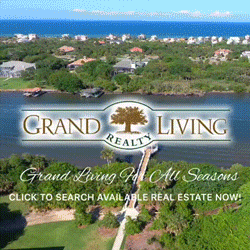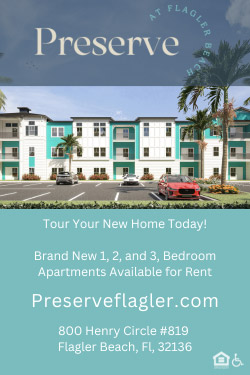
By Pascual Berrone and Joan Enric Ricart
London, New York and Paris have been named the world’s most dynamic and liveable cities. This is according to a new ranking of global cities that highlights Europe’s ability to balance sustainability and growth in its urban centres.
The IESE Cities in Motion index looks at 183 cities in 92 countries, and ranks them in nine key areas: human capital, social cohesion, economy, governance, environment, mobility and transportation, urban planning, international profile and technology. It’s different from other indices in that it takes into account so many metrics – more than 100 – on everything from ease of starting a business to number of museums and art galleries, internet speed and commute times.
The idea is to systematically gauge what makes a city the sort of place where people want to live and work. This is important not just for the quality of life of habitual residents, but also because location is vital for attracting global talent, especially among younger generations.
What makes the winners?
The top 10 cities in the 2025 edition were London, New York, Paris, Tokyo, Berlin, Washington DC, Copenhagen, Oslo, Singapore and San Francisco.
The top three all do particularly well in human capital, which includes features like educational and cultural institutions. They also score highly on international profile, which looks at indicators of global interest, such as the number of airport passengers and hotels.
Beyond those two areas, London cements its status as a global hub of high-level innovation and development, also standing out for governance and urban planning. The UK capital is somewhat weaker in social cohesion, where it came 20th, though not nearly as bad as second-place New York, which ranked 127th out of 183 cities in this category – among the lowest of developed countries. New York does, however, stand out for its economic performance, and does very well in mobility and transportation.
Paris, meanwhile, performs well across many metrics, including urban planning as well as international profile and human capital.
What Europe gets right
We’ve been calculating the index for a decade now, and European cities consistently perform well. This year, five of the top 10 cities – London, Paris, Berlin, Copenhagen and Oslo – are European.
We adjust the index on a regular basis in order to make sure that we’re measuring what’s relevant. For example, this year we introduced new metrics on women’s leadership, renewable energy sources and green spaces, as well as on availability of coworking spaces.
There’s no single reason behind Europe’s success, but there are patterns. Its large global metropolises, such as London and Paris, offer advanced technology, international communities and diversified economies in services, technology and finance. They have generally stable political systems and reasonable urban planning, along with advanced public and private transport options. However, while highly diverse, they also suffer from income inequalities.
In addition to these mega cities, Europe is home to a large number of sustainable and culturally vibrant cities of many sizes. All the Spanish cities included in the index (10 in total, including Madrid and Barcelona) are part of this cluster.
These are mature economies that prioritise sustainability over rapid growth, seeking to balance liveability and stability. They also have steady political systems, a commitment to green policies and urban planning strategies that give weight to sustainable infrastructure that enhances liveability.
They do well in social cohesion, with high levels of integration and relatively low levels of inequality. In terms of technology, they are steady adopters but they are not, for the most part, trailblazing innovators.
It’s also interesting to note the performance of North American cities, which show that economic might and technological prowess don’t always translate into more liveable metropolises. US cities dominate the economic dimension – eight of the top 10 in economic performance are American – but there’s not a single American city in the top 10 for social cohesion or environment. They do well in our ranking – New York, Washington, San Francisco, Chicago and Boston are all in the top 20 – as would be expected of high-income cities, but their performance in different areas varies widely.
Meanwhile, developing countries continue to struggle to break into the top ranks. In Latin America, the highest-ranked city is Santiago (89th), followed by Buenos Aires (117th) and Mexico City (118th). In Africa, Cape Town (156th) is the top-ranked city. At the very bottom of the ranking are Lagos, Lahore and Karachi.
Recommendations for cities
In this tenth edition, we are starting to see greater homogeneity of cities, suggesting that urban planners are learning how to confront similar social, economic and geopolitical challenges. Here are some of our recommendations for how they can improve further:
- Adaptive and participatory planning: Cities should adopt an approach to planning that is both inclusive and adaptive. This means actively engaging residents, businesses and organisations in identifying priorities, and establishing mechanisms to respond to unexpected developments.
- Sustainability as a core principle: A commitment to environmental sustainability and innovation in urban planning is key. Cities should pursue policies that reduce carbon emissions, such as adopting renewable energy. Their strategies must also factor in environmental impact and preparedness for extreme climate events, such as wildfires or floods.
- Economic and social resilience: To address economic inequalities and a lack of social cohesion, cities should implement policies that foster economic equity, such as incentives for small businesses and job training programs that improve access to employment. They should also develop community support networks that strengthen social ties and promote the integration of vulnerable groups.
- Inclusive technology: To close the digital divide, cities should develop a robust technological infrastructure that ensures connectivity across all urban areas and provides digital skills training for residents. Open data platforms that enhance transparency and encourage citizen participation can play a key role in this.
- International cooperation: Cities should actively participate in international networks to foster mutual learning and best practices, and to collaborate on joint projects.
- Continuous measurement: Metrics are essential, both to track progress and to benchmark against other cities with similar characteristics. While cities should develop their own performance dashboards with relevant indicators, our index can serve as an initial framework for identifying key dimensions and the most important indicators.
![]()
Pascual Berrone is Head of Strategic Management Department and Chair of Sustainability and Business Strategy at the IESE Business School (Universidad de Navarra) and Joan Enric Ricart is Professor of Strategic Management and Chair of Strategic Management at IESE Business School (Universidad de Navarra).




























JimboXYZ says
“The top 10 cities in the 2025 edition were London, New York, Paris, Tokyo, Berlin, Washington DC, Copenhagen, Oslo, Singapore and San Francisco.”
Rather 10 places I never want to visit or be, life is too short for those places. Just USA alone, NYC has Wall Street as it’s main reason to thrive. Everyone’s money is there. Washington DC, the Federal Government is the reason it thrives. SF, CA, I just can’t figure out, beyond being one of the top 3 CA cities (LA & SD the other 2). Perhaps some correlation between Tokyo & the Asian influences there, definitely not the AIDS/HIV curse of LGBTQI as a reason for thriving ? Everyone of those USA cities, crime ridden, disease infested locations, sanctuary cities. If that’s sustainable & thriving, mark me off that list of those that want any part of those places.
Surfgod says
I have heard from two recent friends that Paris is trashy and not like it used to be. They both said, independently, that Amsterdam was the best city to visit for the overall beauty of the city and friendly citizens.
Pierre Tristam says
Paris is like SNL: we’re constantly complaining that it’s not what it used to be and just as constantly finding it indispensable.
Sherry says
We had a great visit to Paris last fall. . . it is just as wonderful as ever! I suppose it’s all about the eye of the beholder. If you are small minded, angry and always looking for the negative, like so many Maga Cult members, you will always find what you seek because it all begins with your own personal attitude. We now live happily in beautiful Sausalito, CA near wonderful San Francisco. Happy to be so far from those “naysayers” who chose not to come here. . . fine with us. We really do not miss your negative energy.
How very sad for you though.
Laurel says
Here’s where Flagler County had the chance to do it so much better! Instead of sprawling subdivisions, there should be more mixed use living (term?) where people live in areas that have walking to stores and businesses from where they live. Communities that connect, like small towns. City Place, in West Palm Beach, has commercial businesses, restaurants, a large movie theater, and apartments, while being near downtown. We went there often, and enjoyed it.
Some of the newer developments are less consumer oriented, and more community oriented. Town Center, in Palm Coast, looked like it was headed in that direction, but instead, was left with many opened, treeless fields, without that walking connection. It did not succeed. It was, and still is, incredibly unfinished. Palm Coast has plenty of sidewalks, but from where to where? Where’s the downtown? There is none.
I did see a show, maybe 60 Minutes, that displayed an old shopping mall turned into a community with shops, restaurants, businesses, with small apartments up on the top floor. People love it! They don’t mind the smaller apts, they said it makes them want to come out and mingle with others. They walk downstairs to the dentist, and to the grocery store, etc..
A much more commercial view of this is the shopping area across from the Daytona Speedway. Very smart. It’s ready for large influxes of people enjoying the races, staying in the hotels, and walking to the restaurants, movie theater, Bass Pro Shop, other types of businesses, the races, without getting in a car until it’s time to leave.
Most of the examples I gave here were developed in cities that were already developed, and in need of new ideas. Can you imagine what it would be like if Flagler County had required more of these compact, mixed developments, with a focus on community living, with far less traffic, and much more green areas between instead of the current cluster f**k of traffic and sprawling, endless urban units where cars are constantly necessary, and wildlife loses?
Maybe the wrong developers were allowed to do the same old clear cut, build the cracker boxes, take the money and leave the public holding the bill.
The dude says
Jimbo… living in a crime ridden shithole like Palm Coast, whining about crime ridden metropolis like NYC, San Fran, or Paris…
Peak MAGA.
Sherry says
Thank you Dude. . . perfect retort!
Thank you Laurel. . . a well thought out analysis. Unfortunately, you are asking a county that is ruled by Maga Republicans to “think” beyond the end of their noses. Not going to happen!
The dude says
“Here’s where Flagler County had the chance to do it so much better! Instead of sprawling subdivisions, there should be more mixed use living (term?) where people live in areas that have walking to stores and businesses from where they live. ”
Every single small town within 50 miles of Atlanta has taken a main street of abandoned and dilapidated storefronts, like Bunnell, and transformed it into exactly that. And they are all thriving.
Acworth, Kennesaw, Alpharetta, Cartersville, Canton, Ballground, Woodstock, I go on and on with the names.
There’s a good mix of development in all of these areas, houses, senior only developments, work/live/play developments, townhomes apartments… all of it. It takes vision, which the voters of Palm Coast simply don’t have.
They want gated communities, security cameras, and people who service them to live 40 miles away.
This place is EXACTLY what the voters have voted for.
Laurel says
Thank you, Dude, for the information. I think you are right. But now, some are starting to see what’s it’s become here, and the county and city leaders have little interest. There is no downtown in the City of Palm Coast! I think that is ridiculous.
European Village was an attempt at such a community, but it still didn’t really make the mark. Marineland had a vision, for a while, but that seems to have faded.
What a wonderful place this would have been if there were groups of small, walkable communities, instead of urban sprawl which requires car usage for the simplest necessities. Nice park like and wooded areas separating the projects, with trails and walkways connecting the communities. Real communities, where people know each other.
Oh well, more builds of 450 houses, lots of streets and unhappy people, lots of oversized storage units, and very little foresight continue.